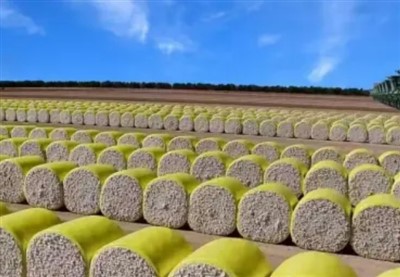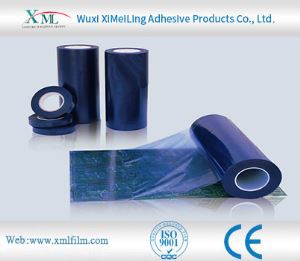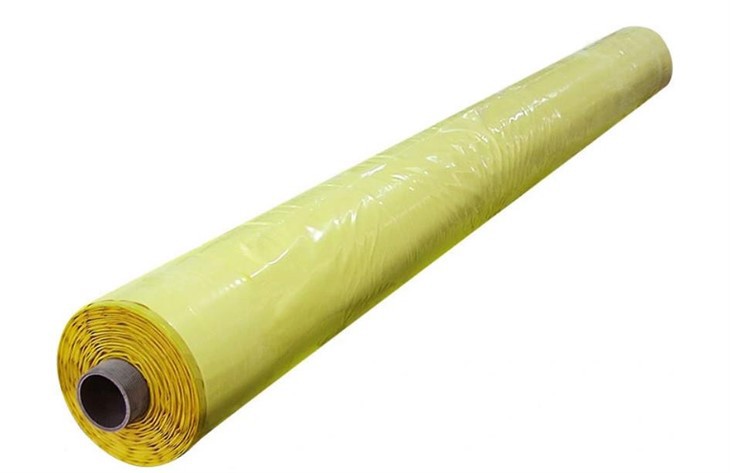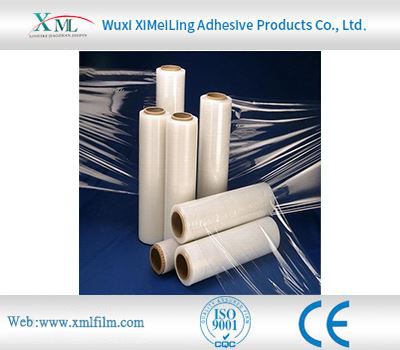Storage method of cotton bale wrap film
2025-04-25
The correct storage of cotton bale wrap film is crucial to maintaining its performance and extending its service life. Storage needs to comprehensively consider multiple factors such as environment, packaging, and stacking to avoid affecting the use effect due to improper storage.
1. Environmental Condition Control
The first condition for storing cotton bale wrap film is to keep the environment dry. A humid environment can easily make the film damp, resulting in decreased viscosity, weakened tensile properties, and even mold growth. The relative humidity of the warehouse should be controlled between 40% and 60%. Humidity monitoring equipment can be installed for real-time monitoring, and a dehumidifier can be equipped to adjust in time when the humidity is too high. At the same time, avoid direct sunlight, as ultraviolet rays will accelerate the aging of the film and reduce its strength and toughness. The warehouse should be built with shading materials or equipped with shading curtains to ensure that the film is in a cool and light-proof environment. In addition, the appropriate temperature is also critical. The storage temperature is best kept between 5℃ and 30℃. Too high or too low temperatures will have an adverse effect on the performance of the film. High temperatures will make the film soft and sticky, while low temperatures will make it brittle and easy to break.
2. Packaging and stacking methods
Before storage, cotton bale wrap film should be kept in its original packaging to avoid direct exposure to the air. If the original packaging is damaged, it needs to be repackaged with moisture-proof and light-shielding materials, such as plastic film bags or kraft paper bags. When stacking, the film should be neatly stacked on a pallet or shelf with a height of at least 10 cm to prevent erosion by ground moisture. The number of stacked layers should not be too many, generally not more than 5 layers, so as to prevent the bottom film from deforming and sticking due to excessive pressure, affecting its use. Films of different specifications and batches should be stored separately and clearly marked for easy access and management.
3. Regular inspection and maintenance
During storage, the cotton bale wrap film needs to be regularly inspected to see if the packaging is intact and whether the film is damp, aged, or damaged. If problems are found, take corresponding measures in a timely manner, such as changing the packaging, transferring the storage location, etc. At the same time, follow the "first in, first out" principle and give priority to the film that has been put into storage earlier to ensure that the film is used within the shelf life and avoid performance degradation due to long-term storage
1. Environmental Condition Control
The first condition for storing cotton bale wrap film is to keep the environment dry. A humid environment can easily make the film damp, resulting in decreased viscosity, weakened tensile properties, and even mold growth. The relative humidity of the warehouse should be controlled between 40% and 60%. Humidity monitoring equipment can be installed for real-time monitoring, and a dehumidifier can be equipped to adjust in time when the humidity is too high. At the same time, avoid direct sunlight, as ultraviolet rays will accelerate the aging of the film and reduce its strength and toughness. The warehouse should be built with shading materials or equipped with shading curtains to ensure that the film is in a cool and light-proof environment. In addition, the appropriate temperature is also critical. The storage temperature is best kept between 5℃ and 30℃. Too high or too low temperatures will have an adverse effect on the performance of the film. High temperatures will make the film soft and sticky, while low temperatures will make it brittle and easy to break.
2. Packaging and stacking methods
Before storage, cotton bale wrap film should be kept in its original packaging to avoid direct exposure to the air. If the original packaging is damaged, it needs to be repackaged with moisture-proof and light-shielding materials, such as plastic film bags or kraft paper bags. When stacking, the film should be neatly stacked on a pallet or shelf with a height of at least 10 cm to prevent erosion by ground moisture. The number of stacked layers should not be too many, generally not more than 5 layers, so as to prevent the bottom film from deforming and sticking due to excessive pressure, affecting its use. Films of different specifications and batches should be stored separately and clearly marked for easy access and management.
3. Regular inspection and maintenance
During storage, the cotton bale wrap film needs to be regularly inspected to see if the packaging is intact and whether the film is damp, aged, or damaged. If problems are found, take corresponding measures in a timely manner, such as changing the packaging, transferring the storage location, etc. At the same time, follow the "first in, first out" principle and give priority to the film that has been put into storage earlier to ensure that the film is used within the shelf life and avoid performance degradation due to long-term storage
You Might Also Like
-

what are the advantages of cotton packaging film
-

How does pe protective film cope with high temperature environment
-

The Advantages of Cotton Wrap Film
-

Advantages of Cotton Bale Wrap Film
-

How Polyethylene Packaging Material Copes with High Temperature Environment
-

How to Remove Protective Transparent Plastic Film Without Damaging the Surface
